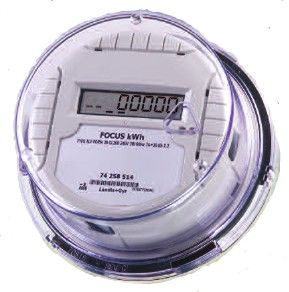TimC
WI/UP Border
- Joined
- Apr 17, 2020
- Messages
- 139
No, I'm not proposing an alternative. I'm wonder about the situation with my utility and my proposed grid-tied micro inverter system.
If I understand correctly, the wiring from micro inverters in a grid tied system comes out of the safety disconnect (near meter socket ideally) and goes directly to a double pole breaker in my home's load center panel. Now, please take a look at my utility's one-line diagram of the system they require (attached). The wiring goes from the disconnect straight to a net metering meter. Their design includes a second, revenue meter. Wires from the inverters don't connect directly to the breaker panel.
So, I don't have any particular problem with any of that. However, the equipment supplier is trying to sell me an Enphase Envoy ($500) to go along with my system order while insisting that it will diagnose any problems with individual micro inverters and/or panels and provide me with data about my panel productivity. First, I'm not really a data geek (no insult intended to those that lean that way). I am OK with results showing up on my monthly utility bill's details. And I'm thinking checking individual panel and micro inverter status might be accomplished by a much cheaper, though more labor intensive method if I suspect problems. The other concern I have is having quickly looked through the installation of the Envoy, it connects to and is powered by the breaker in the load center. I'm not sure how you connect that thing with my utility's design (two meters) without any direct run to a load center breaker. I'm thinking a safety disconnect with a breaker instead of just a mechanical shutoff?
While I am waiting for a response to my request for details/explanation from the local utility's technical rep I thought I would run it by the forum to see if anyone has dealt with a micro inverter, grid-tied system involving two separate meters and no wire to the load center.
Any thoughts?
Tim
If I understand correctly, the wiring from micro inverters in a grid tied system comes out of the safety disconnect (near meter socket ideally) and goes directly to a double pole breaker in my home's load center panel. Now, please take a look at my utility's one-line diagram of the system they require (attached). The wiring goes from the disconnect straight to a net metering meter. Their design includes a second, revenue meter. Wires from the inverters don't connect directly to the breaker panel.
So, I don't have any particular problem with any of that. However, the equipment supplier is trying to sell me an Enphase Envoy ($500) to go along with my system order while insisting that it will diagnose any problems with individual micro inverters and/or panels and provide me with data about my panel productivity. First, I'm not really a data geek (no insult intended to those that lean that way). I am OK with results showing up on my monthly utility bill's details. And I'm thinking checking individual panel and micro inverter status might be accomplished by a much cheaper, though more labor intensive method if I suspect problems. The other concern I have is having quickly looked through the installation of the Envoy, it connects to and is powered by the breaker in the load center. I'm not sure how you connect that thing with my utility's design (two meters) without any direct run to a load center breaker. I'm thinking a safety disconnect with a breaker instead of just a mechanical shutoff?
While I am waiting for a response to my request for details/explanation from the local utility's technical rep I thought I would run it by the forum to see if anyone has dealt with a micro inverter, grid-tied system involving two separate meters and no wire to the load center.
Any thoughts?
Tim



